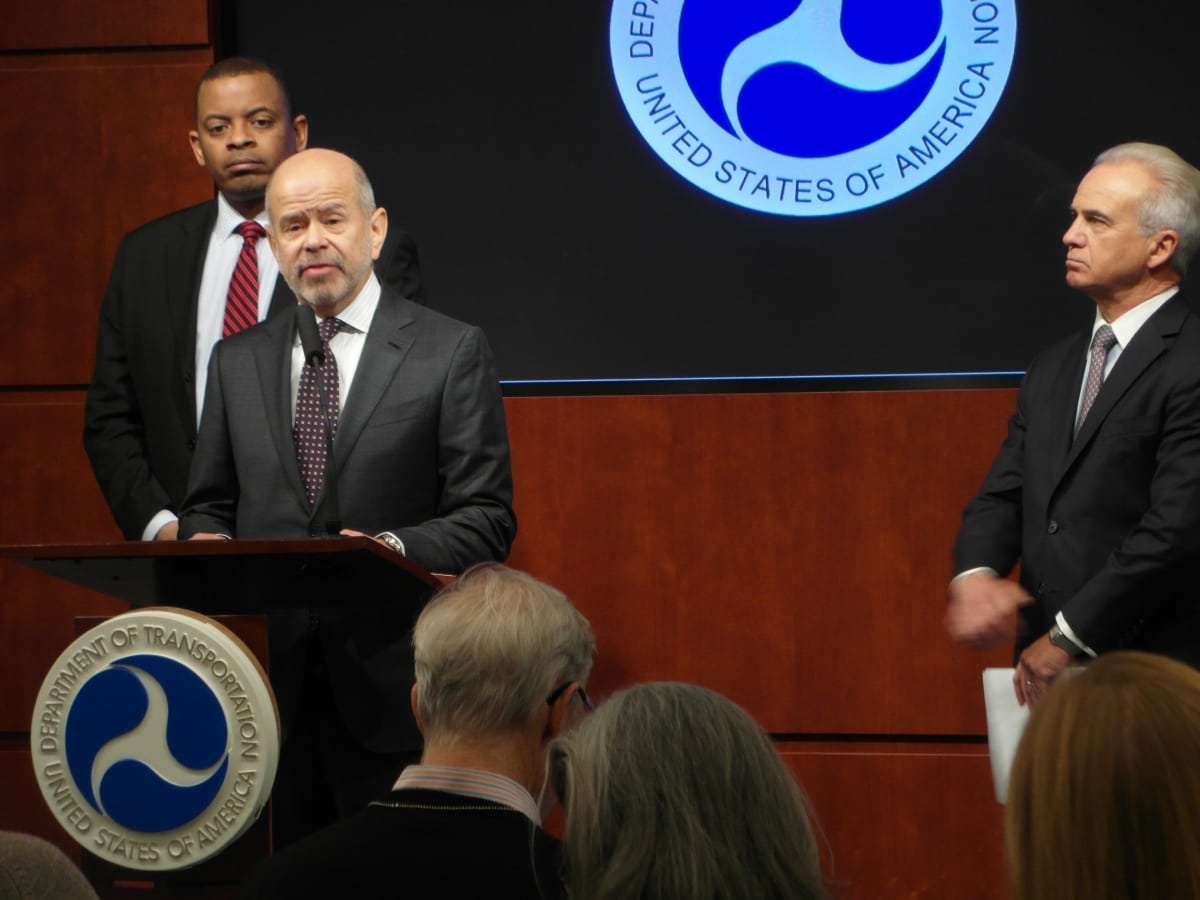 |
| FAA Administrator Michael Huerta delivers SMS final rule at a press conference on Jan. 8. Photo: Department of Transportation |
[Avionics Today 01-15-2015] The FAA is aiming to make commercial aviation safer with a final rule that requires most U.S. airlines to have a Safety Management System (SMS) in place by 2018. The rule builds on many technologies and programs that airlines already have in place to identify and mitigate risk. It goes one step further, however, to require all air carriers authorized to conduct operations under 14 CFR Part 121, or domestic airlines, to develop and implement a formal, organization-wide approach to managing safety.
“Policy makers such as the FAA hope that safety management systems developed under the rule will serve as the next generation of comprehensive safety programs and will keep airline safety initiatives proactive and modern by employing a quality management approach to controlling risk,” said Paul Fraidenburgh an associate of BuchalterNemer, whose practice routinely represents commercial litigation, with an emphasis on technology-related disputes. “If used properly, the SMS should serve as the central nervous system of an airline’s safety program. It is intended to create pathways for swift and effective communication within an organization and between the organization and the regulators.”
At the heart of this communication is big data. Aircraft connectivity and in-flight data streaming capabilities continue to advance, enabling airline dispatch and maintenance teams to collect more data parameters from aircraft while in flight, such as information on aircraft component health, weather conditions and position reporting. This information, paired with off-aircraft data such as passenger trends, can be collected from all segments of an airline and brought together to create a more complete picture when implementing future safety standards. The SMS is a fundamental program in the regulator’s and industry’s shared goal to reduce the U.S. commercial fatality risk by 50 percent from 2010 to 2025.
The FAA estimates that the rule will cost airlines $224.3 million over 10 years, but is offering a federally developed and funded software system to help airlines implement SMS on time and in a way that is ideal for their operations. Through the formation of an SMS, operators will have the business and process management tools in place to gather and examine data on everyday operations, which may hold the key to detecting patterns, determining warning signs and ultimately mitigating accidents.
“In the past, our focus in improving safety was to study the causes of past accidents,” said FAA Administrator Michael Huerta at a press conference following the announcement of the final rule on Jan. 7. “But we all know that our ultimate goal is to prevent accidents from happening at all. That is where safety management systems come in. A safety management system is … a series of processes and procedures that everyone follows so that we can enhance safety. It does this by having a structured approach to look at data from airline operations. This data can help identify patterns and trends that could possibly lead to a problem. But having this information enables the industry to take action before there is a problem.”
A structured and common look at data is key to the success of SMS systems, which many airlines are already participating in voluntarily. Airlines are required to submit a plan to the FAA within six months detailing their SMS blueprint to have a system in place by 2018. That won’t be hard to do, considering many airlines already have a head start, Fraidenburgh told Avionics Magazine.
“Already, airlines are voluntarily sharing enormous amounts of their operational data with the FAA in a cooperative effort to enhance safety,” said Huerta. “We can all learn from each other. The data we have now covers about 96 percent of U.S. air carrier commercial operations. This represents a great willingness to work together.” This data comes from a variety of sources, Huerta added, including self-reporting by employees when they see a safety risk.
This willingness, alongside an understanding that all aircraft and operators have different needs when it comes to safety, led the FAA to deliver a relaxed approach to the ruling.
“The SMS program is not a rigid set of new rules that the FAA is unilaterally imposing on Part 121 carriers. Instead, it is a policy-based program that will require collaboration between industry members and regulators,” said Fraidenburgh, who sees continued promise in the system for years to come. “SMS will likely continue to be welcomed as a tool for facilitating the constant improvement and evolution of aviation safety.”